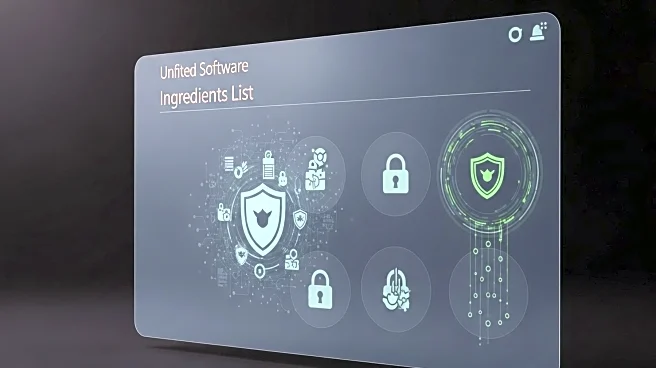What's Happening?
The Cybersecurity and Infrastructure Security Agency (CISA), in collaboration with the National Security Agency and cyber agencies from 14 other countries, has released a guide promoting the adoption of software bills of materials (SBOMs). This initiative aims to create a standardized approach to documenting software components, which can help organizations mitigate cyber risks, avoid fines, and save time. The guide emphasizes the importance of integrating security into the software design process, rather than adding it as an afterthought. CISA's acting director, Madhu Gottumukkala, highlighted the critical role of SBOMs in securing the software supply chain and enhancing resilience. The guide follows CISA's recent update of federal agency guidelines for SBOMs, which received mixed reviews. The document stresses the need for a coordinated approach to SBOM implementation to ensure effectiveness and reduce costs.
Why It's Important?
The push for a unified approach to SBOMs is significant as it addresses the growing cyber threats facing both government and industry. By promoting transparency and accountability in software development, SBOMs can help organizations better manage vulnerabilities and comply with regulatory requirements. This initiative could lead to improved decision-making in software procurement and usage, encouraging vendors to prioritize cybersecurity. The widespread adoption of SBOMs is expected to enhance the security of the software supply chain, ultimately benefiting industries reliant on secure software solutions. The guide's international collaboration underscores the global nature of cybersecurity challenges and the need for collective action.
What's Next?
The guide's publication is likely to prompt further discussions among stakeholders about the practical implementation of SBOMs. Organizations may begin to assess their current software management practices and consider adopting SBOMs to enhance their cybersecurity posture. Government agencies and industry leaders might collaborate to develop standards and best practices for SBOM usage. As the concept gains traction, software vendors could face increased pressure to provide detailed component lists, potentially leading to changes in software development and procurement processes. The success of this initiative will depend on the willingness of various sectors to embrace a unified approach to software security.
Beyond the Headlines
The adoption of SBOMs could have broader implications for the software industry, including shifts in how software is developed, marketed, and maintained. By fostering greater transparency, SBOMs may lead to increased trust between software providers and users. However, the implementation of SBOMs also raises questions about data privacy and the potential for increased regulatory oversight. As organizations navigate these challenges, the role of international cooperation in cybersecurity will become increasingly important, highlighting the need for shared standards and practices across borders.












